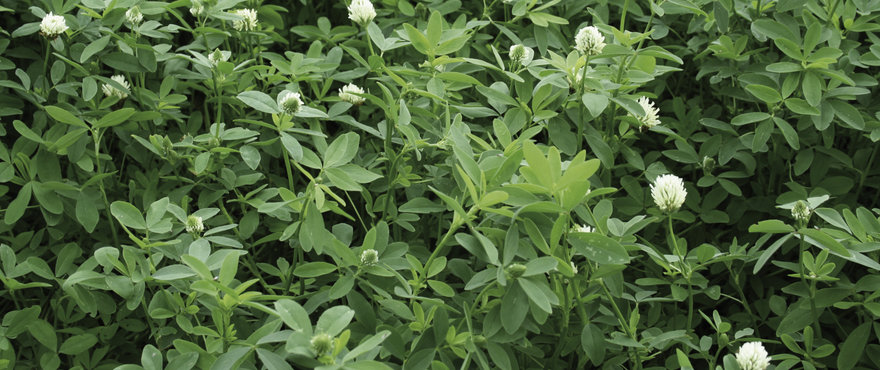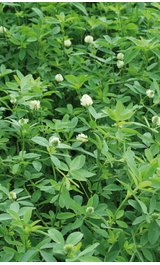This annual legume, a native of the Mediterranean region, is also referred to as Egyptian clover and is important in continental and Southern Europe, North Africa and India at different areas on the Southern hemisphere, where it is grown as forage under medium rainfall conditions or under irrigation.
Berseem clover is an erect plant, rather similar in growth to red clover, it is best adapted to neutral to alkaline soils and has some tolerance to saline soils. Although sometimes included in pasture mixtures to increase the protein content of winter feed, it does not withstand grazing well and can be sown by itself as well as in mixtures as a high protein forage for cutting. It distinguishes form Persian clover by its lower dry matter content, somewhat lower fresh yields and later flowering.
Maturity
Elite II demonstrates late maturity, flowering approximately 160–190 days after sowing.
Pest Resistance
Elite II is tolerant to Blue-Green Aphid (Acyrthosiphon kondoi) and Spotted Alfalfa Aphid (Therioaphis trifolii) once established. Like most other Annual Clovers, Elite II is susceptible to Red Legged Earth Mite (Halotydens destructor). Control measures need to take place prior to seeding or soon after germination.
Key Features
- Shows good early vigour
- Offers excellent winter and early spring production
- Adapted to a large range of soil types, especially lighter soils
- Suitable for grazing, fodder, green manure and High Density Legume mixes
- Excellent pioneering plant, especially on acid soil
Key Benefits
- Elite II has good tolerance to clover scorch and waterlogging and has excellent winter growth
- Demonstrates outstanding forage quality and the ability for multiple cuts it is highly suitable for grazing and hay/silage systems
Disease Resistance/Tolerance
Elite II has tolerance to Clover Scorch (Kabatiella caulivora) however, it may still require chemical applications for control. It is resistant to Phytophthora Root Rot (Phytophthora spp.) and Pythium (Pythium spp.). Elite II does not appear to suffer from any serious leaf diseases which could reduce quality of forage production.
Variety Management/Agronomy
Regeneration - Elite II is a soft-seeded variety and is suited to short term rotations. Should regeneration be required, avoid grazing or cutting for hay after flowering.
Grazing - During establishment care must be taken not to overgraze as this will prematurely thin stands. Elite II can be rotationally grazed or cut for green chop. When grazing, stock should not be allowed to graze out the ‘crown’ as this can damage the plants and reduce plant density. It can be grazed between 2–5 times from late autumn to late spring under good growing conditions and up to six cuts if grown under irrigation. To achieve maximum production it is best to sow paddocks in the very early autumn if possible. Late autumn sowings should be avoided as plants are much slower in their establishment during this period and often don’t provide adequate feed until late winter.

PBR: Elite II has been granted protection under PBR. Unauthorised commercial propagation or any sale, conditioning, export, import or stocking of propagating material of this variety is an infringement under the Plant Breeder’s Rights Act 1994. Barenbrug Pty Ltd has an exclusive licence for the production and marketing of Elite II.



